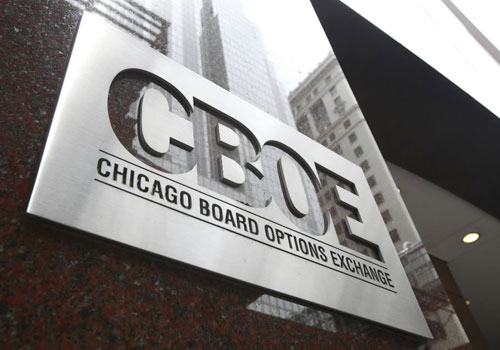(Bloomberg) — Technical malfunctions at stock exchanges around the world are putting their owners’ credit ratings in jeopardy, according to Standard & Poor’s.
Following outages at firms including Nasdaq OMX Group Inc. and Singapore Exchange Ltd., S&P’s Olga Roman said Thursday in a report that industry debt ratings could be reduced in the next few years because of damaged reputations.
The rise of computer trading and increased number of venues has left the equities market vulnerable to disruption, increasing pressure on regulators to demand infrastructure improvements. In August, a computer bug at Nasdaq prompted a three-hour halt for thousands of U.S. shares.
“The recent preponderance of technical glitches at exchanges underscore a gradual rise in operational risk for this industry over the past five to seven years,” Roman wrote in the report. “The recent series of technical problems suggests that stock exchanges — as opposed to futures or derivative exchanges — have become more prone to operational risk. They have also drawn regulatory attention that is likely to result in tougher regulatory standards and oversight.”
Following Nasdaq’s outage, U.S. Securities and Exchange Commission Chairman Mary Jo White met with the exchange chief executive officers in Washington to discuss ways to prevent breakdowns. She told them to collaborate on bolstering their technology and eliminating single points of failure.
Roman said three reasons explain why there have been more technical problems for stock exchanges: increased competition, changes to the market’s structure and the rise of computer trading.
More Complexity
U.S. markets became more complicated after the SEC’s Regulation NMS was implemented in 2007, fragmenting equities trading across more than 50 venues. Coupled with faster and more sophisticated use of computers, it has created conditions where one market’s fault can shut all venues at once.
“While technology is becoming more sophisticated and trade execution more efficient, this also increases the complexity of exchange operations,” Roman said in the report. “In our opinion, faster trade speed and greater interconnectivity are amplifying the impact of operational glitches when they occur.”
Besides Nasdaq’s shutdown last month, other recent glitches include Singapore Exchange’s April malfunction that delayed derivatives trading for about three hours and Bats Global Markets Inc.’s inability to get its own stock trading following the company’s March 2012 initial public offering.
While none of these malfunctions have been enough to persuade S&P to change its ratings, further errors could prompt action, Roman said.
“We haven’t lowered any ratings as a result of these issues so far, but exchanges whose operational risk exceeds industry averages could see rating actions down the road,” she said. “With competition heating up, the ability to ensure seamless operations could go a long way toward determining which exchanges will come out on top.”




